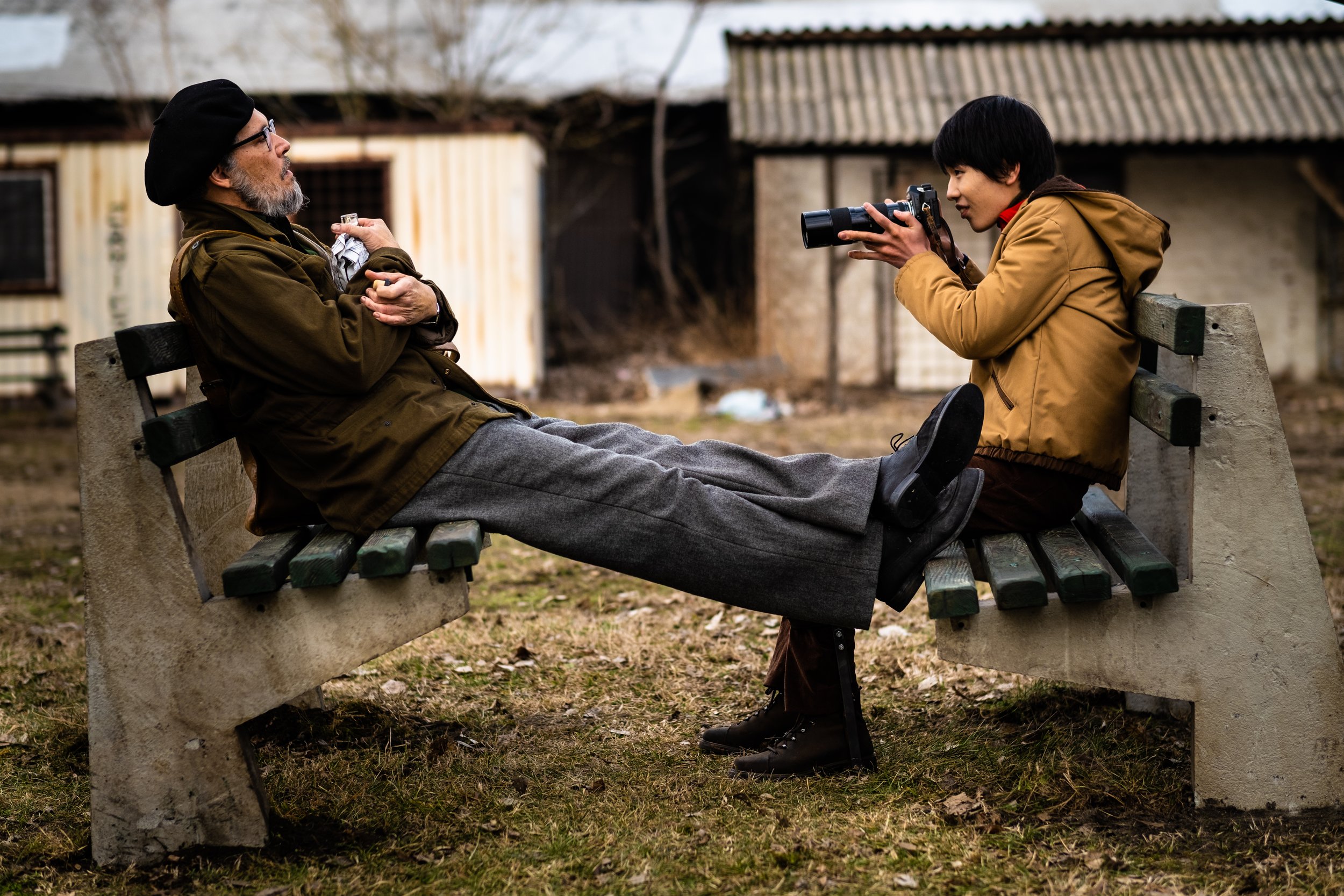Minamata: Johnny Depp Goes Deep in Film About the Japanese Town That Gave Its Name to a Disease
By Liam Lacey:
Rating: C.
A harrowing real-life story from fifty years ago gets an uneven telling in the film Minamata, which is both the name of a Japanese fishing town and a cruel neurological disease caused by mercury poisoning.
The main draw here is Johnny Depp, an actor who, though not a stranger to costumes, is unrecognizable as the real-life legendary Life Magazine photo-journalist, W. Eugene Smith, aged, with a white broom of a beard, rimless glasses and a black beret.
Director Andrew Levitas and a committee of screenwriters trace Smith’s late-career coup, a Life Magazine photo essay called Death-Flow From A Pipe. When he went to Japan in the early ‘70s, he brought the world’s attention to the thousands of victims of Chisso chemical factory.
Johnny Depp and Minami in Minamata
In his career, Smith, who was severely injured as a war correspondent in the Pacific, had already become famous for a series of powerful photo essays for Life Magazine, on subjects ranging from Welsh coal miners to Nobel Laureate Albert Schweitzer’s West African clinic.
The film catches up with him at a career low point, in 1971, in his fifties and in poor health. In the first scene, we see him moving stiffly around his red-lit dark-room, slugging whiskey, and popping pills while the soundtrack plays 10 Year’s After’s sardonic I’d Love to Change the World.
He’s living in a New York loft, reduced to selling his cameras for money. Though he disdains colour photography, Smith even stoops to doing a commercial for Fuji. But the young Japanese-American translator, Aileen (Japanese musician, Minami), who pitches it to him, has another agenda.
She wants to bring the world’s attention to the human and environmental disaster unfolding in the Japanese fishing town of Minamata, where the Chisso Chemical plant has been pouring chemicals into the water for decades.
Smith, invigorated with a new humanitarian cause, heads off to the New York headquarters of Life magazine and bursts into an editorial meeting to make his pitch: His long-suffering editor, Robert Hayes (Bill Nighy, playing it straight and credibly American), gives him the green-light and a warning: “Don’t waste what time you’ve got left.”
Along with Aileen as his translator (she later became his wife), he heads off to Japan. As it happens, his host family have a daughter who’s a victim of the disease; blind, mute and paralyzed since birth. She’s the subject of one of Smith’s most famous photographs, cradled by her mother in a traditional Japanese bath in a Pietà pose. (The real photo is entitled Tomoko and Mother in her Bath).
Director Levitas has definite esthetic approach here, with Smith’s photos as the inspiration for cinematographer Benoît Delhomme (he also shot Julian Schnabel’s Vincent Van Gogh biopic, At Eternity’s Gate). The photographer’s influence is most obvious in scenes of Gene’s nightmares and flashbacks, in which the screen fades from colour to stark black and white. Ryuichi Sakamoto’s cooly emotional orchestral-synthetic score hits an appropriate melancholic tone.
The trouble starts with the script, which wobbles between an investigative thriller and a psychological study. On the thriller side, Gene and Aileen form an alliance with a young activist and victim of the disease, Kiyoshi (Ryô Kase), and together they infiltrate the company hospital, taking pictures of the victims and finding proof that the company had been aware for years of the damage it was doing.
Later, the company’s president (Jun Kunimura) attempts to win Gene over with a tour of the factory, followed by the offer of a fat bribe to kill the story. At one point, he is severely beaten by company goons, leaving him with eye damage.
On the psychological side, Gene is the study of a crusty, sensitive, broken, prematurely old man, given to general truths about photography (“Seeing what’s going on behind the eyes, it’s an empathy thing”).
He continues to booze and engage in long one-sided conversations, including drunken phone conversations with his editor. Depp is fine in an uncharacteristically reserved role, doing his best acting in the last decade.
Yet the film’s fascination with Gene, either his adventures or his demons, seems somewhat beside the point in a story where dozens of Japanese activists are fighting for their lives and those of their dying children. Most prominent among the Japanese supporting cast is the middle-aged Mitsuo Yamazaki (Hiroyuki Sanada) who leads protests outside the gates of the Chisso factory, crying out that “It’s the last battle for humanity!”
A half-century later, it’s a story well-worth re-telling, though not necessarily tied to the redemptive tale of one American journalist.
CLICK HERE to see Bonnie Laufer’s interview with Minamata director Andrew Levitas.
Minamata. Director: Andrew Levitas. Screenwriters: David K. Kessler, Andrew Levitas, Jason Forman, Stephen Deuters. Starring: Johnny Depp, Hiroyuki Sanada, Bill Nighy, Jun Kunimura, Minami, Ryo Kase, Tadanobu Asano, Akiko Iwase. Minimata is available on digital/VOD release on April 8.


